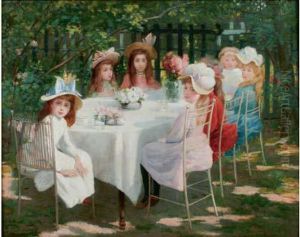Eugene Lemaire Paintings
Eugene Lemaire, not to be confused with the Belgian painter Eugène Lemaire (1864–1934), was a French artist known for his pastoral and genre scenes, as well as his adept use of light and color. Born in Vitry-le-François, France, in 1874, he was active during a period that saw the transition from traditional academic painting to the various movements of modern art, including Impressionism and Post-Impressionism.
Lemaire's early life and training are not well-documented, but he is known to have been active in the late 19th and early 20th centuries. His style was influenced by the naturalism and attention to light that characterized the work of the Impressionists, yet he retained a certain academic quality in his figure work and compositions. Lemaire's paintings often depicted serene rural landscapes, bucolic scenes of country life, and the daily activities of rural folk, reflecting a nostalgic view of the French countryside.
Throughout his career, Lemaire exhibited his work at various salons and exhibitions. His paintings were appreciated for their charm, technical skill, and the peacefulness they evoked. He was part of a tradition of French landscape painting that included artists such as Jean-Baptiste-Camille Corot and Charles-François Daubigny, but he also brought his unique sensibility to the genre.
Eugene Lemaire passed away in 1948. While he may not be as widely recognized today as some of his contemporaries, his work continues to be of interest to collectors and historians who appreciate the pastoral genre of French art. His paintings are part of private and public collections and occasionally appear in art auctions, where they are valued for their contribution to the rich tapestry of French art history.
